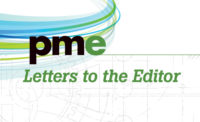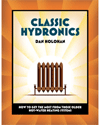In John Siegenthaler’s June 2015 column (“The lower the better”), he incorrectly advocates the use of hot water temperature reset for all heating systems. There are many reasons why this article is incorrect. Hot water reset also is incorrectly required in the 2015 International Energy Conservation Code.
There are several technical, practical and economic reasons that the following provision in the 2015 IECC should be removed.
• C403.2.5 Hot water boiler outdoor temperature setback control.
First, while outdoor temperature setback (also more commonly called outdoor temperature reset) may work well for continuously occupied buildings whose heating requirements are always inversely proportional to outdoor temperature, such as multifamily buildings, it does not work well or at all for intermittently occupied buildings.
Second, the majority of commercial buildings covered by the IECC have internal heat gains from people, lighting, equipment and plug loads. Thus, the heating requirements are not inversely proportional to outdoor temperature.
Third, most intermittently occupied buildings are also required by the 2015 IECC to comply with C403.2.4.2 Off-hour controls. ANSI/ASHRAE/IESNA Standard 90.1-2013 has a similar provision 6.4.3.3.2 Setback Controls.
Outdoor temperature reset or setback varies the water temperature that heats buildings according to outside temperature and the hot water supply temperature is inversely proportional to the heat loss. After a building has been set back for a few hours or a few days in winter, the temperature in the building usually drops. However, if the outdoor temperature is warm at the time occupancy is restored, the heating hot water temperature will not be warm enough to heat the building in any reasonable amount of time, or at all.
Take for example an office building that has been set back over a weekend with outdoor temperatures in the 40s and 50s° F. A common indoor setback temperature is 55°. If the outdoor temperature on Monday morning is in the 60s°, the hot water supply temperature will not be high enough to bring the 55° building temperature up to comfort conditions for many hours, if at all.
Fourth, the following provisions in ANSI/ASHRAE/IESNA Standard 90.1 are similar to those in ICCC C403.2.5, but allow exceptions for good reason. ASHRAE obviously does not believe that such a provision like C403.2.5 without exceptions is worthwhile in all commercials buildings.
Fifth, there are no provisions or recommendations in the ASHRAE Handbook that are similar to those in C403.2.5. If such a provision had merit for all buildings, it would certainly be included in the ASHRAE Handbook. It is not included.
Sixth, hot water reset controls also assume that all heating zones will be the same temperature or require the same hot water supply temperature. This means that all zones served always have the same heat losses and heat gain.
Also, there are no published, peer-reviewed papers or articles that support adoption of the 2015 IECC Section C403.2.5, or that evaluate the energy savings, if any, in all building types and occupancies covered in the 2015 IECC.
Therefore, Section C403.2.5 in the 2015 IECC must be removed before adoption in this state.
Larry Spielvogel, P.E.
L. G. Spielvogel, Inc.
Bala Cynwyd, Pa.


